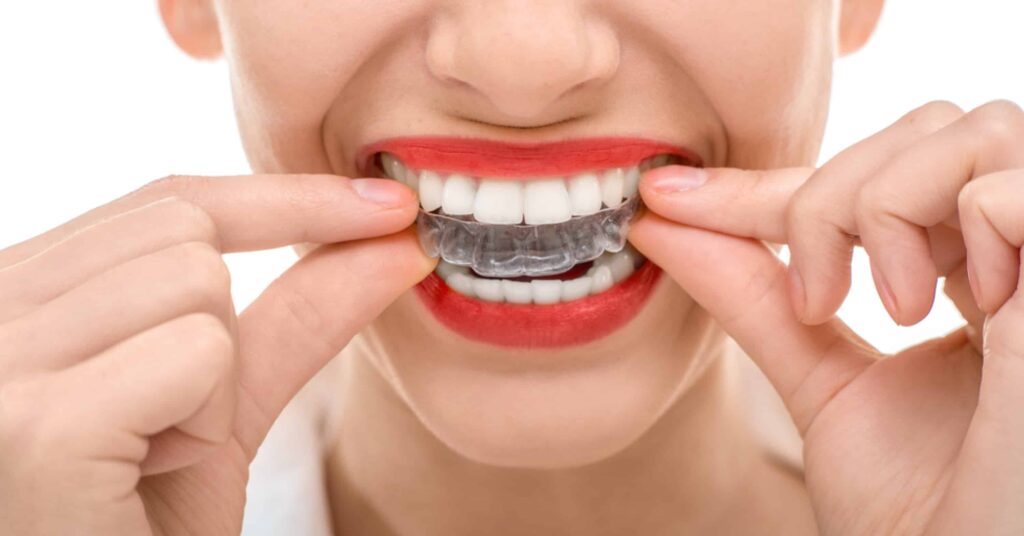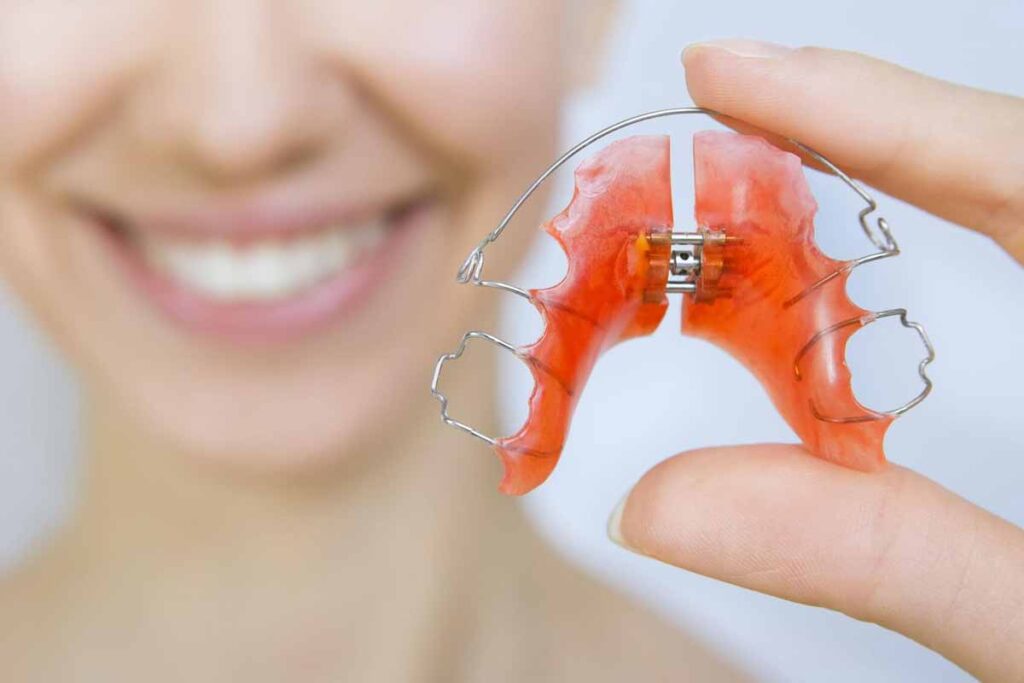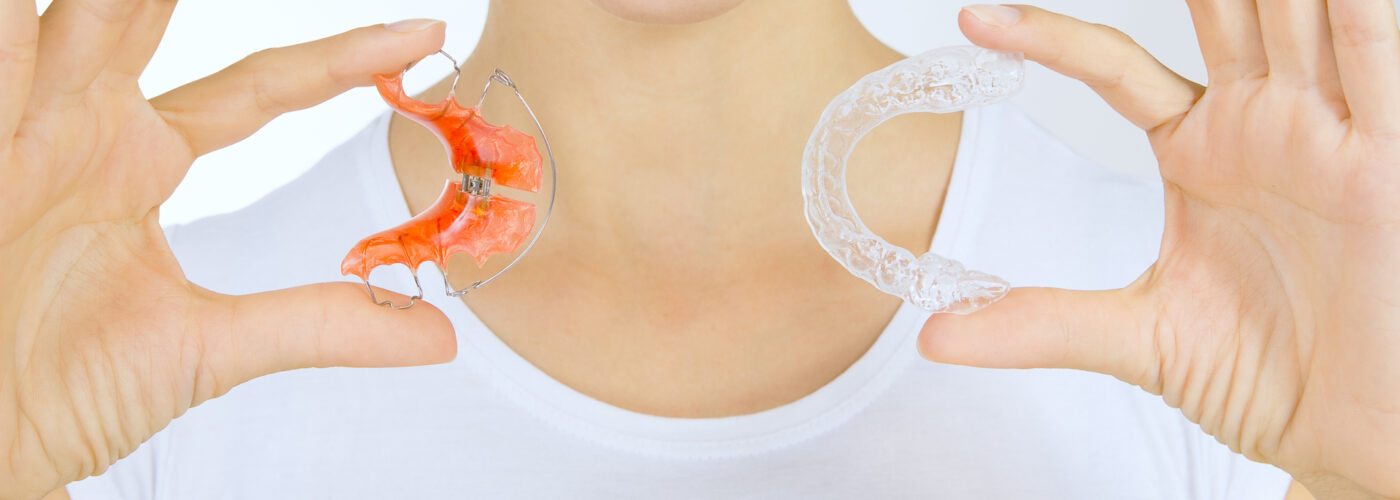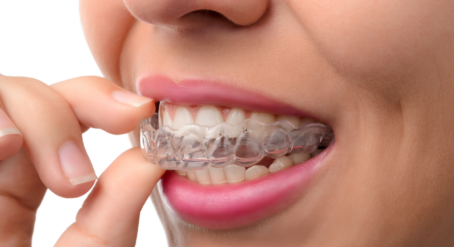The day you or your child gets their braces removed can be an amazing feeling. You and your orthodontist would have been working extremely hard to keep the treatment on track, and now you can appreciate that straight and healthy smile with confidence. But the orthodontic journey does not end on the day the braces are removed. There are still precautions you need to take to ensure the brand-new smile remains straight for years to come. This will usually involve wearing a retainer that encourages the teeth and jaws to stay in their new alignment.
Types of retainers
There are various types of retainers your orthodontist may recommend. They can be fixed (glued in) or removable and will depend on your unique treatment option and result.
Fixed retainers involve a wire that is glued to the backside of your front teeth to prevent movement while bone tissue rebuilds around them.
Removable retainers, on the other hand, are designed to be removable for ease of cleaning. They come in two main forms: plates or clear retainers. A plate retainer consists of an acrylic base with a wire across the front. A clear retainer is made from a clear plastic material.
All removable retainers are custom made from a mould or scan of your teeth once the braces are removed. Removable retainers need to be taken out when you are eating, cleaning your teeth, and playing sport. Your orthodontist will recommend the minimum number of hours it needs to be worn in a day for the removable retainers to be effective.
Removable retainers, if worn as instructed, are very effective at preventing the movement of the teeth. However, a common concern people have is that they may lose or break their retainers which will have a long-term effect on their smile.

How long can you go without your retainer?
You can generally go a few days, or even a week, without seeing a big shift in your teeth. But it’s a good idea to either find the lost retainer or replace it (in the event you can’t find it) as soon as possible. If you wait too long, then your teeth will start shifting without anything to keep them in place, which means all that hard orthodontic work you did would go out the window if you don’t wear your retainer as instructed.
How fast do teeth move without retainer?
It depends how long it has been since the orthodontic treatment was completed, and whether you or your child are growing. If the treatment finished recently, likein the past one year, and especially in growing individuals, the teeth can start to move in as little as days or a week. If the treatment was years ago, and in adults, the changes can be slow and variable.
While you might not notice a big difference straight away, extended periods of not wearing your retainer will become more noticeable over time and the old smile (the one you were trying to fix in the first place) will quickly replace the new one. It can take anywhere between a few weeks to a year to really see the change, so it’s important that you wear your retainer as directed by your orthodontist.
How can you keep your teeth straight after losing your retainer?
If you’ve lost your current retainer, the first thing you should do is stay calm and contact your orthodontist. They’ll be able to make you a new retainer that will keep your teeth nice and straight. While there might be a delay in your new retainer being delivered or prepared for you, your orthodontist will give you advice for how to look after your smile while you wait.
If you are no longer living close to your orthodontist, you can find a local orthodontist to help you.
What to do if your child loses or breaks their removable retainer?
It’s important to ensure your child lets you know it has happened right away, so you can get a replacement retainer organised as soon as possible.
The first thing you need to do is contact your orthodontist who will then advise you what to do next. Most likely you will need to return the orthodontist’s office get a new set of impressions or scans done to ensure the new retainer is both comfortable and effective.
Since it can take some time for teeth to settle into their new position, without a retainer to hold the teeth down, the longer you wait to contact your orthodontist, the higher the risk of teeth shifting out of their positions and become crooked again.
How much does a new retainer cost?
This is one of the most common questions we get asked. A replacement will usually cost between $150–$300, depending on the type of removable retainer you are using, and the fee charged by the dental lab to the orthodontist.

Here are some practical ways to reduce the likelihood of your child losing their removable retainer:
- Always use a retainer case – as soon as the retainer is out of the mouth, it must be stored in the retainer case.
- Avoid putting a retainer directly in a pocket or bag without protection as the retainer is fragile and may get damaged.
- Never wrap a retainer in a napkin as it’s easy to forget or throw in the bin.
- Always keep the retainer out of reach of pets (because they love to use them as chew toys).
- Avoid cleaning retainers under boiling water or in dishwashers as heat may warp the materials.
Not quite on your orthodontic journey yet? Use our Finder Tool to search for a specialist orthodontist in your local area who can advise you on all stages of orthodontic treatment.











I would like to purchase replacement retainer. Can you recommend me the cheapest clinic. I’m living at Wantirna South ( Knox city)
You can use our Finder Tool to search for an orthodontist near you. They’ll be able to provide you with a quote for your specific circumstances: https://finder.orthodonticsaustralia.org.au/
I had to moved my braces before 3 years and used retainer and I lost my retainer 1 year back can I buy new one
Hi Buddhi,
Yes you can get a new retainer, however, you’ll need to have a check up appointment with your orthodontist first. Your teeth may have shifted significantly over the past year, so your original retainer may not fit correctly. Trying to force a retainer when teeth have shifted significantly can have negative side effects such as loosening of teeth or gum disease. They’ll then be able to help you replace your retainer or provide you with a completely new one to help protect your smile.
We hope this helps!